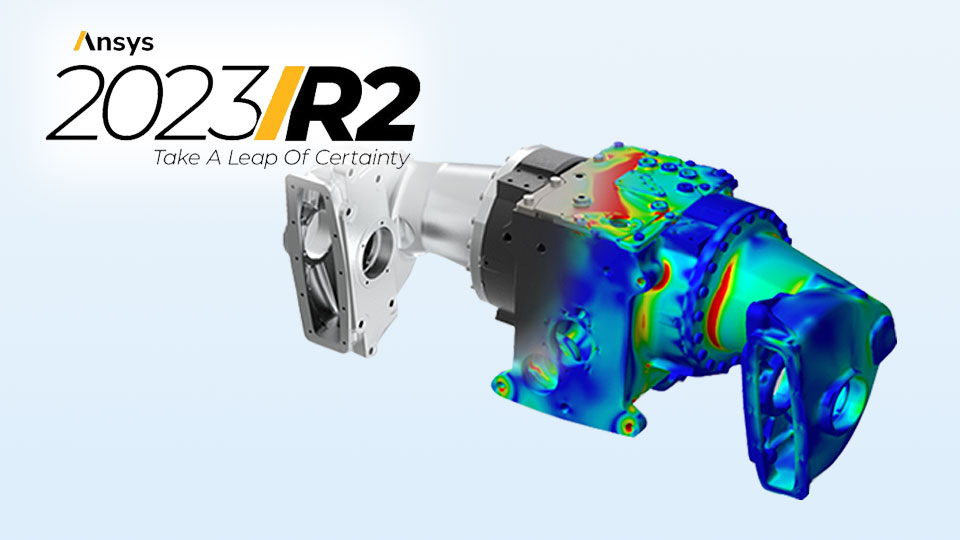Highlights and experiences regarding the latest Ansys update on structures.
Ansys 2023 R2 - Structures
Here is an excerpt of new features and further developments from the area of structural mechanics.
At a glance
Among the new features in 2023 R2, the following have to be highlighted:
- Automation and Flexibility in Ansys Mechanical with PyMechanical
- Workflows for simulating and optimizing Hydrodynamic bearings
- Enhanced weld meshing
- Ansys Motion: Advanced modeling of flexible structures using CMS
- Additive Solution: All New Wizard for Simulating LBPF
- Electronics reliability: submodeling workflows with detailed trace modeling
- Workbench LS-Dyna: ISPG solver availabe
in Detail
Ansys Mechanical
- PyMechanical: Interface with Mechanical pythonically to automate its capabalities and seamlessly connect with other technologies
- Cycle-Jump method, Multi-Stage cyclic symmetry and nonlinear Harmonic analysis: The next level turbo machinary analysis.
- Weld meshing: Enabling the creation of welds near complex geometric features and areas where it has been difficult to create weld connections.
- NVH Toolkit: Pre-Test Calculator for optimum sensor location based on Effective Impedence Method (EIM)
- Generalized Damage material model with cycle-Jump and creep support method
- Initial back stress for kinematic hardening material models
- Coupled Field support electrostatic pre-stress, coriolis damping, element embedding
- Contact Overconstraint detection and elimination with CNCH,OVER
- User defined geometric quantities for optimization (center of gravity, moment of inertia, CO2-emission, cost,...)
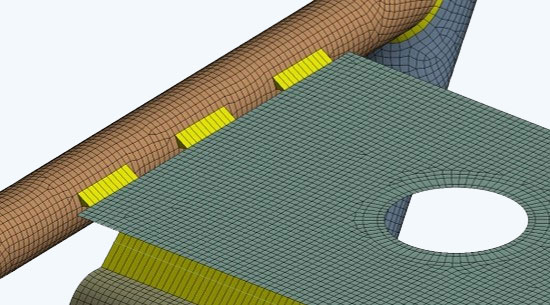
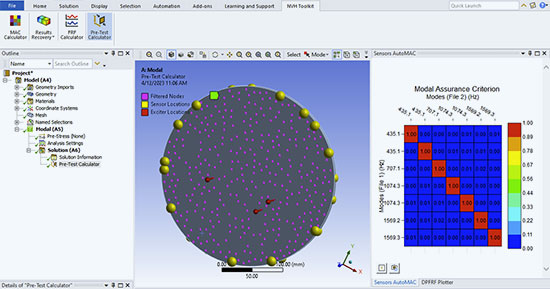
Ansys LS-DYNA
- Particle Simulation: The incompressible Smooth Particle Galerkin (ISPG) solver is now exposed through Mechanical.
- A so called binout tracker can be defined under Solution Information, which gives easy access to many time history results like energies, forces, airbag results etc.
- An ongoing journey: Mechanical generates significantly improved meshes for explicit analysis with LS-Dyna.
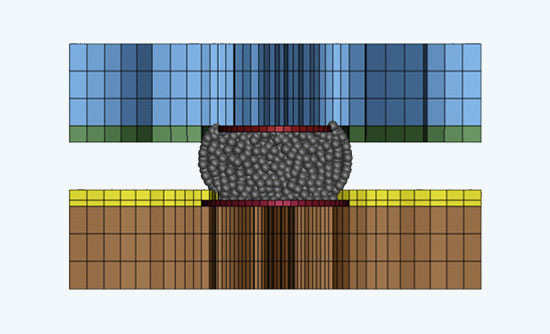
Ansys Motion
- Multiple bodies connected via contacts can be condensed as a single body.
- Hydrodynamic bearing force resulting from a co-simulation with Tribo-X is now available.
- Contact results like contact pressure are now available for faces belonging to rigid bodies.
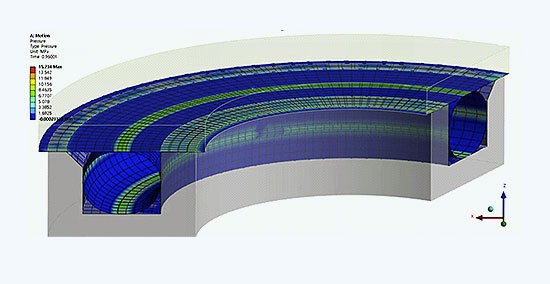
Ansys Additive Solution
- An all new wizard for LPBF simulation simplifies workflows and handles multiple parts & supports.
- Creep properties are available for additive materials for improved analysis of the heat-treatment process.
Electronics Reliability
- A new Submodeling Workflow with a detailed Trace-Modeling has been released, enabling very detailed analyses.
- New APIs for generating trace models from copper layers or run random vibration analysis using csv-based strain mapping
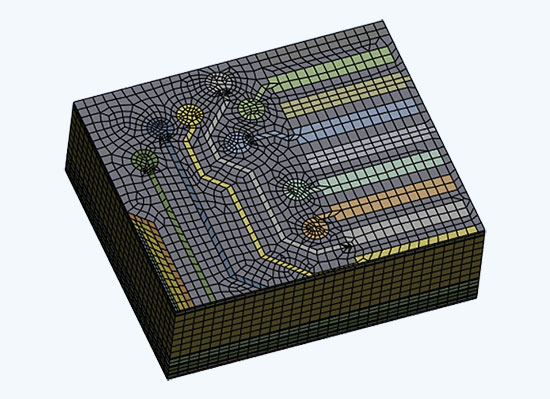
Ansys Sound
- The software handling was enhanced to improve user experience.
- New automation features in DPF for Python and C++ have been released.
- Direct Link from Ansys Motion
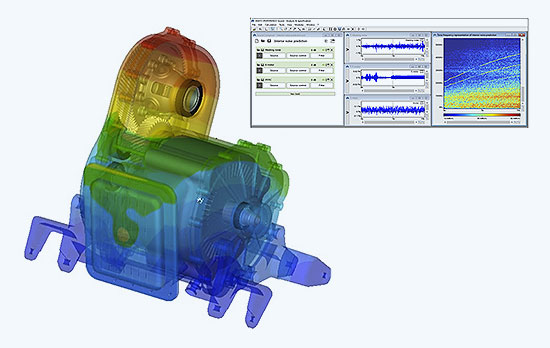
All information has been prepared to the best of our knowledge. Data without guarantee.
2023 R2 update webinar
We recommend the CADFEM Ansys 2023 R2 update webinar on structural mechanics.
Notes on installation and licensing for Ansys product updates
NOTES ON INSTALLATION
Since Microsoft has officially terminated the maintenance of Windows 7 as of 14 January 2020, Windows 7 is also no longer supported by Ansys. For security reasons alone, an update to Windows 10 is recommended.
The software can be downloaded as usual via the Ansys Customer Portal:
Software Download
For new customers, a user login is required before downloading. For this registration the current customer number is required.
To download the Ansys software, we recommend downloading the ISO images. With this download option, you will receive all data and do not have to assemble single modules to an installation archive. It is not necessary to burn a DVD, because the downloaded ISO images can also be unpacked with appropriate tools like 7-Zip (please use the latest version!) or WinRAR. Please do NOT use the Windows own Zip Utility or WinZip, because they might not unpack the images without errors. The individual ISO images must always be unpacked into their own folders to avoid overwriting files with the same name.
Further information about the current Ansys Release 2023 R1 is available in the download menu under the item "Getting Started". These notes contain information about the topics: Highlights of Release, Platform Support Documents, Important Notices, Downloads & Prerequisites, Installation;
With Ansys 2023 R1 only 64bit operating systems are supported. This applies to the licensing as well as to the client / server installation of the Ansys software. Further information about platform support is available under the following link:
Platform-Support
The Ansys Inc. release notes contain the following important messages:
Compatibility with Previous Releases
Ansys 2023 R1 was tested to read and resume databases from the following previous versions: 2021 R1, 2021 R2, 2022 R1, and 2022 R2. Note that some products are able to read and resume databases from releases prior to 2021 R1. See the specific product sections below for more information. For those products that cannot directly read an earlier database in 2023 R1, first resume it in a supported version and then resume that database in 2023 R1.
Upward/Forward Compatibility: No previous release has the ability to read and resume a database from a more recent release.
Advisories
In addition to the incompatibilities noted within the release notes, known non-operational behavior, errors and/or limitations at the time of release are documented in the Known Issues and Limitations document, although not accessible via the Ansys Help Viewer. See the Ansys customer site or online Help for information about the Ansys service packs and any additional items ot included in the Known Issues and Limitations document. First-time users of the customer site must register to create a password.
For a list of issues and limitations in previous releases that have been resolved in Release 2023 R1, refer to Resolved Issues and Limitations document on the Ansys Help site.
For the most recent version of the current release's Release Notes document, see the Ansys, Inc. Release Notes section of the Ansys Help internet documentation website or download it here. Ansys Help (https://ansyshelp.ansys.com/) will not be supported on the Internet Explorer browser after the release of Ansys 2020 R2.
NOTES ON LICENSING
Before updating the license server, please check if your license key is suitable for this use. The release date of the new version 2023 R1 must be before the maintenance expiration date of the corresponding license increment.
More information about Platform Support at Ansys
For all license keys issued after January 12, 2023 the installation of the new license manager of 2023 R1 is required.
When ordering a maintenance extension, the ASC (Ansys Support Coordinator) automatically receives a current license file. If required please contact our contract department: lizenz@cadfem.de. After each maintenance extension the received license files must be imported to ensure availability of the current licenses and compatibility to newer Ansys versions.
- "Ansys Common Licensing" (ansyscl.exe) replaces the "licensing interconnect"
- New Licensing Client Settings Utility ("elastic licensing" supported as failover, reduced license manager upgrades, industry standard "FlexNet Publisher" (FNP) implementation)
The file setupLM.exe was replaced by the -LM command option. This command can be used in connection with setup.exe for both command line and silent installation (example: setup.exe -LM or setup.exe -silent -LM).
Questions about licensing?
Please send us an e-mail and we will answer your request as soon as possible.
in Detail
Ansys Mechanical
- The new "Scoping Wizard" automatically suggests new assignments after an update of the geometry. This makes updating the model after a geometry change much easier and faster.
- The AI/ML-based resource predictor has been extended to display not only the expected memory requirements but also the expected time requirements per iteration for different CPU counts.
- Geometry-preserving remeshing enables a whole new kind of simulation. Analysis can be started with a coarse mesh and Ansys refines where needed. The special feature: The new mesh is oriented to the geometry and not the initial mesh.
- The new topography optimization enables stiffening of sheet metals while minimizing their mass. Topography and topology optimization can be combined to develop efficient structures.
- The Mechanical mesher has been improved in many ways for more efficient and user-friendly work, which is especially evident in defeaturing, weld modeling and MultiZone hexahedron meshing.
- Copy/Paste Between Sessions Using Clipboard for all objects in Mechanical
- Command Snippet’s Output Search Prefix recognizes parameters with variables inside percentage (%) symbols
- Contact Distance Probe graphics
- Embedded Charts in Graphics Window
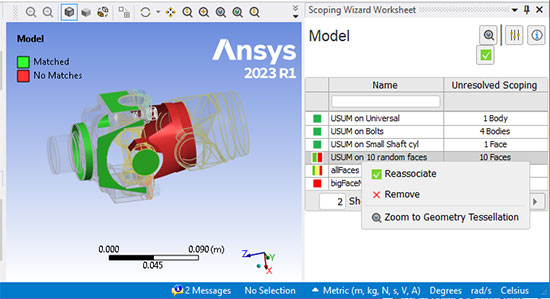
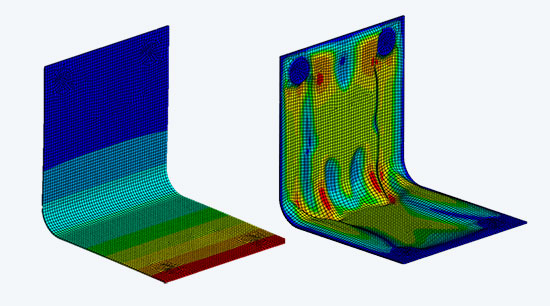
Ansys LS-DYNA
- In Mechanical, meshing for explicit analysis has been significantly improved, which greatly reduces geometry and mesh editing by the user.
- Define and simulate multiple independent load cases in one analysis with subsequent load case dependent post-processing, e.g.: different initial velocities and drop positions for drop tests.
- The Workbench workflow for injection molded parts has also been released for LS-Dyna analyses. With this, fiber orientation can be read in and used with anisotropic material models, which were created with the Material Designer, for example.

Ansys Motion
- Simulation Scenario object is available in Mechanical, which allows to define complex boundary conditions, solution-dependent time step control or stiffness behavior of bodies (rigid, flexible) according to own conditions. This significantly extends the modeling possibilities.
- Ansys Motion is now included in the Structures installation package.
- Ansys Motion is now licensable through Ansys Elastic.
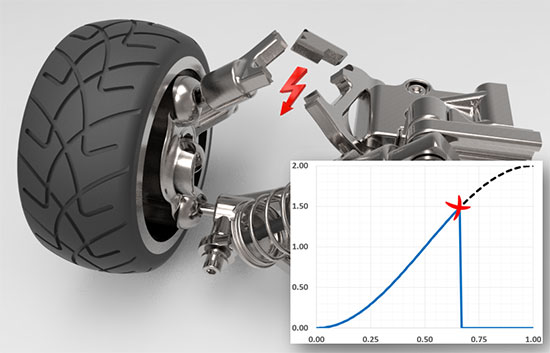
Ansys Additive Solution
- Distortion compensation can now be automated, which significantly reduces the user's effort.
- The adaptive octree remeshing allows to coarsen mesh regions that are far away from the laser to improve the performance of the analysis.
- The DED method can now also be applied to non-planar base plates, which allows, for example, the simulation of repair procedures.

Electronics Reliability
- The Sherlock library of predefined components such as capacitors, resistors, etc. has been increased from about 250000 to over 600000, reducing time-consuming manual definitions.
- The Sherlock Icepak wokflow has been improved so that more complex trace geometries or parameters for 2R resistor models can be exported and temperature fields for multiple PCBs can be imported.
- New Ansys Sherlock APIs for autmatization are available, which especially simplify the definition of boundary conditions and loads of the ICT analysis and enable sensitivity studies with optiSLang.
- Sherlock can now independently calculate the temperature field from a heat conduction analysis, allowing variable temperature definition of individual components.
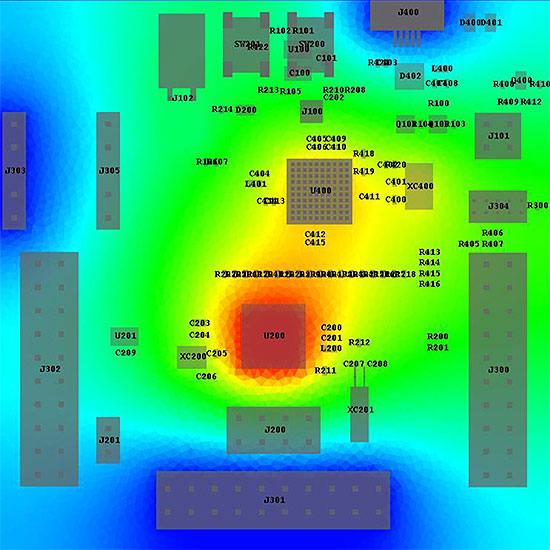
Ansys Forming
- The modeling of the insertion of the blank under gravity with subsequent closing of the blank holder was simplified.
- The MPP (distributed parallel) solver is now available, resulting in a performance improvement.
- The reference geometry can be imported for nominal/actual comparison in springback analyses.
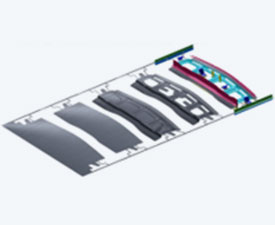
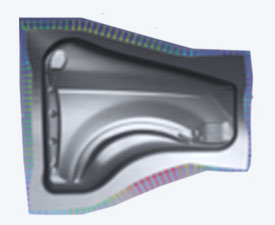
Ansys Sound
- New SAS GUI for more comfortable working.
- Functions read into SAS (e.g. velocity over time) can be conveniently differentiated and integrated up to twice.
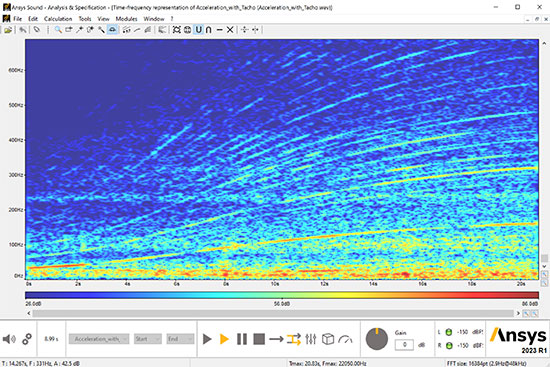
All information has been prepared to the best of our knowledge. Data without guarantee.


